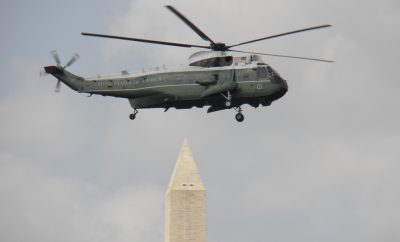 "Damascus" courtesy of Игорь М; License: (CC BY 2.0)
"Damascus" courtesy of Игорь М; License: (CC BY 2.0)
World
A Tale of Two Pipelines: The Influence of the Energy War in the Middle East
As the civil war in Syria has escalated, American, Saudi Arabian, and Russian interests have played increasingly larger roles. The Obama Administration adopted the stance, shared by the majority of the U.N., that Syrian President Bashar al-Assad was guilty of human rights violations and must be removed from power. Russia, on the other hand, has long been an ally of Syria, and Russian President Vladimir Putin has supported Assad throughout the conflict. This has led to what is in part a proxy war, with Syrian rebels that have been trained and armed by Saudi and American militaries fighting against Assad’s forces, which are armed with Russian weapons and drive Russian tanks. Amid this turmoil has been the growing power of ISIS, opposed in different ways by both the United States and Russia.
As the war has carried on, it has grown increasingly bloody. By the end of 2015, the war had claimed a staggering 470,000 Syrian lives, representing a loss of 11.5 percent of the nation’s population. Even among the survivors, the damage to Syrian national security has been extreme; over half of the nation’s population has been displaced by the war. The Syrian conflict is vast and extremely complicated and both Russia and the U.S. have numerous reasons for their involvement.
However, it’s imperative to analyze one important but under-emphasized element of the war: the role of energy. Both the U.S. and Russia stand to influence the future of the global energy market if their side comes out dominant in this conflict. If the Assad regime maintains control of Syria, it will likely push ahead with current plans to build a natural gas pipeline running from Iran through Syria. The pipeline would be built by the Iranian government in collaboration with Russia’s major gas corporations, and would allow both countries to profit off of the largest gas reserve on earth. On the other hand, the United States and Saudi Arabia have an active interest in preventing this from happening to protect its share in the energy market, as well as the strength of the petrodollar, against Russian and Iranian competition.
President Trump has long denounced America’s anti-Assad position and previously discussed working with Russia, and possibly Assad, against the common enemy of ISIS. However, following the Syrian Air force’s chemical attack in the Idlib Province, Trump at least temporarily reversed his public position on Assad and Russia. Simultaneously, the Trump Administration has grown increasingly closer to Saudi Arabia. Future negotiations will tell whether there is still a possibility for Russia and the U.S. to work together in Syria, and Trump’s ultimate stance on the Assad regime will heavily influence whether the Iranian pipeline is built. We are currently at a critical moment in the future of the Syrian conflict, and for the roles of Russia, Saudi Arabia, and the United States in the global energy market. Read on to see what each side stands to gain and lose as we move forward.
Syria: The Energy Crossroads
The conflict in Syria is fueled by numerous religious and geopolitical divisions within the Middle Eastern Region and energy is far from the only relevant factor in American or Russian involvement. However, the importance of energy within the Middle East and its ever-present role in regional conflict is hard to overstate. Control of the global energy market means being able to exert huge influence on the international economy, and the Middle East’s vast fossil fuel reserves have always attracted the interest of international superpowers. The last two decades of constant regional conflict have been a consistently perilous struggle for power and market control, especially between Saudi Arabia and Iran, the two largest economies in the Middle East.
Syria has attracted international interest because its central location in the Middle East makes it a potential energy crossroads for pipelines that could transport natural gas across the region from the South Pars/North Dome gas field. Because of Syria’s critical position, the results of the war will likely determine who gains access to the gas field, and thus will greatly impact the future of energy sovereignty within the region. The oil and gas trade is very directly related to the strength of the American dollar and both the U.S. and longstanding ally Saudi Arabia are worried that Syria could become the construction site of a pipeline. A new major pipeline could upset the balance of the energy market, and subsequently the power of the dollar and the Saudi Riyal, which is pegged to the dollar.
Saudi Arabia, home to 16 percent of the world’s proven oil reserves and the leader of the Organization of Petroleum Exporting Countries, has long used whatever means are necessary to ensure that its business never shrinks. Recently, as foreign dependence on petroleum in the last few years lessened due to a boost in gas production abroad, the Saudis chose to ignore their 2014 promise to reduce output and actually increased their production up until 2016. This caused international petroleum prices to drop, keeping Middle East petroleum competitive, despite the fact that the price gouge also sent many of the poorer OPEC countries near collapse.
In order to maintain its status as the largest energy producer in the Middle East, Saudi Arabia has also spent the last two decades attempting to block energy infrastructure proposals designed to access the South Pars/North Dome gas field. The South Pars/North Dome Gas Field lies beneath the Persian Gulf, with the northern end of the field in Iranian territory and the Southern edge in Qatari territory. It is the single largest gas reserve on earth, and a pipeline that allowed cross-regional transport of its resources could dramatically change the future of the energy market. The first pipeline was proposed in 2009 and would have carried gas from Qatar through Saudi Arabia, Syria, Jordan, and Turkey, although both the late King Abdullah in Saudi Arabia and Assad in Syria rejected its construction in 2009. It is sometimes falsely claimed that Saudi Arabia supported this pipeline, but the Saudis also opposed its development because a pipeline would have given the E.U. direct access to cheap gas. Saudi Arabia’s relationship with its then ally Qatar had at the time also grown unstable, and the Saudis were skeptical about a large scale business collaboration.
However, in place of the Qatari project, an alternative pipeline was proposed, which would be built avoiding Saudi land and would replace Qatar with Iran as the central supplier of natural gas. Saudi Arabia views Shiite Iran as its primary enemy within the Middle East and is determined to keep it from growing in power in the energy market. However, Assad publicly supported this pipeline, which would give Russian and Iranian business interests primary access to the gas field’s massive resources. Saudi Arabia lacked the veto power it held with the first pipeline, which forced Saudi Prince Bandar Bin Sultan to reach directly out to Putin, promising to ensure that the gas reserve would not be utilized in competition with Russia’s business if Putin abandoned his support of Assad’s regime. Putin refused and Saudi Arabia pushed forward with regime change in Syria by militarizing rebel Sunni groups, including the Free Syrian Army, the Al Nursa Front, and the organization that would become ISIS.
The U.S. and Saudi Arabia
The U.S. alliance with Saudi Arabia is a tense and complicated one. Saudi Arabia has come under international criticism for its human rights record and the Saudis have continuously funded extremist Sunni groups that threaten the Western world. However, the economies of the two nations are tied together through the petrodollar. Petroleum is the most commonly traded substance on earth by volume, and globally, petroleum has been traded almost exclusively in American dollars for the last 40 years. If a country wants to buy oil, it must first purchase U.S. dollars, which increases demand for the dollar and dollar denominated assets. Because of this, the success of the oil industry and cooperation with Saudi Arabia very directly affects our domestic economy. The United States and Saudi Arabia have worked together in coordination for almost three-quarters of a century to influence Middle Eastern geopolitics, from the establishment of the petrodollar system to the Persian Gulf War to both Yemen Civil Wars and the battle against Al Qaeda.
Saudi Arabia has also been a central customer of the U.S. defense industry for decades, although Obama ordered a weapons sales freeze following large-scale civilian casualties from Saudi airstrikes in Yemen. Some have accused this freeze of being largely political theater, since overall the Obama Administration sold over $46 billion in weapons to the Saudis, more than any president in the 71-year alliance. The State Department also went on to grant a pre-planned $3.51 billion initiative to arm and train the Saudi army to defend the Saudi-Yemen border, claiming none of this money would go the actual war it supposedly condemned. While the Obama Administration has been critical of Saudi Arabia, it also continued to support the country and many of its conflicts throughout Obama’s presidency.
While Assad is certainly guilty of human rights violations, the U.S. also has a critical interest in coordinated regime change because the current pipeline proposal would give unfriendly Iran dominant control of the largest source of energy in the Middle East. Furthermore, Russia’s three largest gas companies will play a large part in the development of the pipeline, meaning Russian interests stand to profit directly off the reserve. Russia and Iran are two of the few countries worldwide that refuse to use the petrodollar, so not only does control of the gas field give them a huge business advantage, the greater their share in the market the weaker the U.S. dollar and Saudi Riyal will become. While the United States and Saudi Arabia disagree on many things, the two nations are united geopolitically in their desire to prevent Russia and Iran from gaining greater regional power and control over the energy market through a coordinated business venture.
In 2014, following a meeting between John Kerry and King Abdullah of Jordan, the United States agreed to work with Saudi Arabia on a military offensive in Syria through Operation Timber Sycamore, with Saudi Arabia funding and arming the Free Syrian Army and the CIA training them in preparation for the war. While the stated purpose of U.S. involvement was to counter ISIS, the choice to fund the rebel group looking to overthrow the ruling Baath party reflects the Obama Administration’s consistent desire for regime change.

“Obama/Saudi Ties” courtesy of Tribes of the World; License: (CC BY-SA 2.0)
Russian Involvement
Currently, Syria is Russia’s oldest and strongest ally in the Middle East, although Iran and Russia have grown increasingly closer throughout the last decade. Aside from representing Russia’s foothold in the region, Syria is also the location of Russia’s only Mediterranean naval base. In exchange for this critical regional access, Syria has the support of one of the world’s largest superpowers. The long-standing connection between these countries makes it no surprise that Russia is willing to give political and military support to Assad.
However, Russia also stands to gain significantly moving forward if Assad can suppress the rebel forces. As long as the Assad regime maintains control of Syria, then construction of the Iranian pipeline should move forward as planned. Russia is the second largest producer of fossil fuels globally and recently overtook Saudi Arabia as the world’s top crude oil producer. Together oil and gas exports account for 70 percent of Russia’s $550 billion annual exports. European natural gas imports from Russia dramatically increased from 48 percent in 2010 to 64 percent in 2014, and Putin’s long-term plan is to become an even larger energy superpower, spiking production and exports by 2020 by increasing sales in Europe and expanding into the Asia-Pacific region. It is no secret that the E.U. dreads increasing its dependence upon Russia’s major gas giants. Because of heavy resistance to the Russian energy business in the West, Putin has been continuously looking for new projects in the East, notably in China and the Middle East. Iran has long been looking for international investors in its shale business, and in 2013, the Russian state-controlled gas corporation Gazprom signed a deal with the Iranian government to cooperate in ongoing energy infrastructure development. The infrastructure agreement makes Gazprom the third major Russian corporation to be heavily invested in Iranian energy, following Lukoil and Zarubezneft. The construction of the Iranian pipeline would give these corporations new ability to profit off of huge quantities of natural gas. By ensuring that the field is developed and utilized first by friendly Iran, along with Russian gas corporations, Putin can avoid dangerous new competition in the European energy market as was planned in the original Qatari pipeline, thus maintaining Russia’s position of market dominance.
Fear of Saudi Arabia and increased U.S. support for the Syrian insurgency pushed Assad to request greater assistance from Putin, which resulted in Russia joining the conflict in September 2015, mounting a series of airstrikes both against the Free Syrian Army and ISIS. What followed became an increasingly serious proxy war between the Syrian rebels, backed by the United States, and the Syrian military, backed by Russia. The bloodiest of these conflicts has centered around the City of Aleppo, where over 400,000 have died thus far. The FSA has suffered both massive causalities and the loss of members who have defected to join the more radicalized Al-Nursa Front and Jaysh Army. The Syrian Air Force’s chemical attack on Idlib came shockingly during negotiations that were expected to come out in Assad’s favor. President Trump sided initially with the majority of the Western world and voted in favor of a U.N. resolution to launch an investigation into the attack. The resolution was blocked by Russia and we are currently in a pause, waiting to find out how the conflict will move forward.

“Aleppo, Syria” courtesy of yeowatzup; License: (CC BY 2.0)
Conclusion: What does the Future Look Like?
While Trump has criticized Saudi Arabia in the past for its own role in funding radical Islam, he seems to have recently made a complete reversal on this stance and has even sided with Saudi Arabia in its dispute with U.S. ally Qatar. The Trump Administration and Saudi Arabia have also recently entered into a $110 billion dollar weapons deal, the largest in U.S.-Saudi history. Following the attack on Idlib, it seemed possible that Trump might decide to align with the anti-Assad stances held by the Obama Administration and the Saudi government. However, since the U.S. airstrike and the failed U.N. Security Resolution, the Trump Administration has not publicly emphasized Assad’s removal.
Currently, it’s uncertain whether Trump will side with reestablished ally Saudi Arabia or if his administration still plans to find a way to work together with Russia in Syria. The U.S. warned the Russians prior to the airstrike on the Shayrat base, allowing them to evacuate without casualty. There have also been accusations that the airstrike was essentially political theater to dispel the notion that Trump is compromised by Russian interests, given the fact that Russia chose not to deploy its anti-missile systems, effectively allowing an attack it knew was coming to take place.
While the future of the South Pars/North Dome gas reserve isn’t certain, at this point Assad has successfully dominated the majority of rebel forces in Syria. As long as the Assad regime is still in place, any major cross-regional energy infrastructure utilizing Syrian land will most likely be to the advantage of Assad and his ally Putin. If the Iranian pipeline does end up being built, the reverberations will be felt throughout the global energy market. Saudi Arabia may lose the upper hand in several markets where it competes with Iran and Russia, especially in East Asia where Saudi Arabia has struggled to maintain active business in the face of Russian competition. Furthermore, it is very unlikely that Europe will ever be able to utilize the gas field as a cheap alternative to lessen its dependence on Russia.
If Iran and Russia become larger figures in the energy market, the petrodollar will weaken as less U.S. dollars are needed for oil transactions, which would affect the economies of both America and Saudi Arabia. How dramatic these effects will be is impossible to say. Saudi Arabia still has massive hydrocarbon reserves and is in no danger of being pushed out of the global fossil fuel trade. While the petrodollar has played a large part in the strength of the American dollar since the end of the Gold Standard, it is only one of many factors that contribute to and decide the strength and stability of the U.S. economy. We will have to wait and see what direction the Trump Administration takes American foreign policy in the Middle East to learn the answers to these questions.








Comments